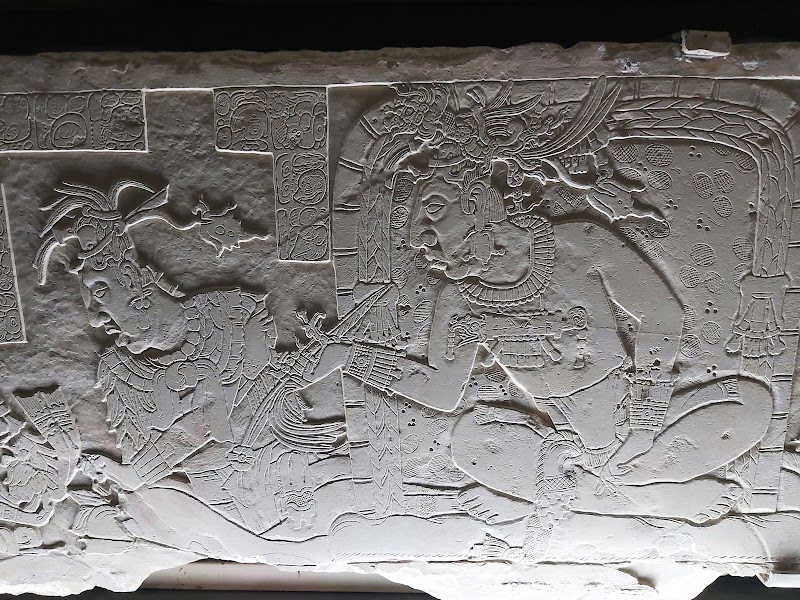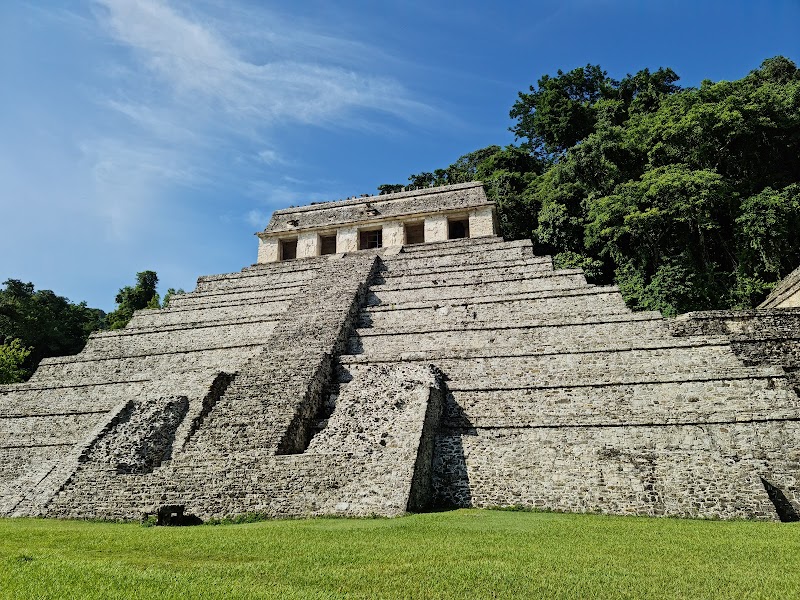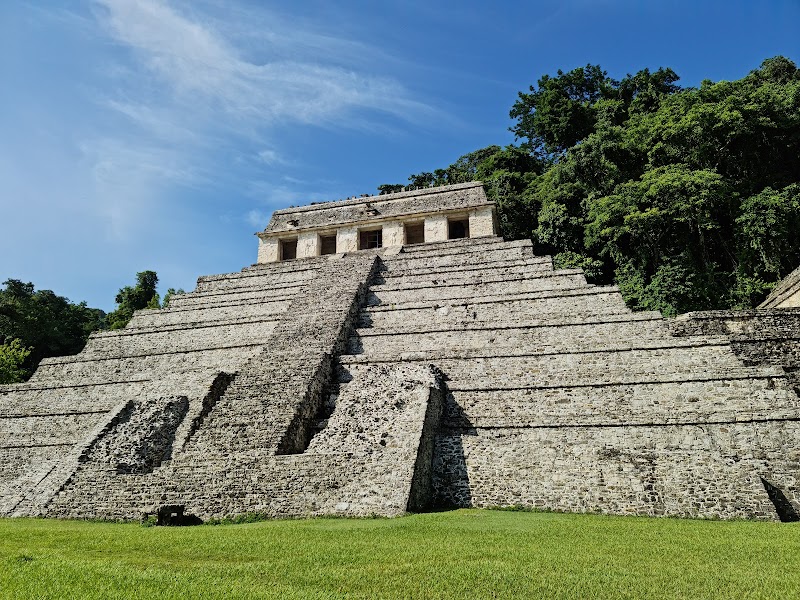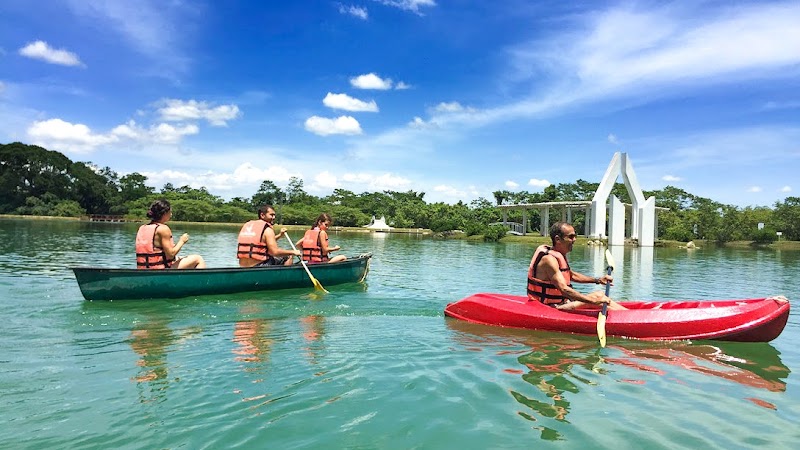Welcome to Palenque: A Timeless Gem
Ever imagined exploring an ancient city-state that still holds 90% of its secrets under wraps? Welcome to Palenque! This ancient Mayan hub, nestled in the lush tropical forests of Chiapas, Mexico, offers a captivating window into the rich Mayan civilization. With its mystifying archaeological site, enchanting waterfalls nearby, and wildlife-rich biosphere reserves, Palenque promises an extraordinary journey beyond the ordinary.
But with so much to see and experience, where do you begin? Enter our comprehensive Tourist Map of Palenque. Not only will it guide you straight to the heart of Palenque's allure, but also help you tailor an unforgettable journey aligned with your rhythm and interests. It's not just about moving you from point A to B, but about curating a unique story that you'll enjoy narrating.
" Booking.comUnveiling the Hidden Gems of Palenque
Stepping away from the well-known path of the Maya ruins, Palenque unfolds a myriad of enriching experiences that you simply can't afford to miss. Be it the mesmerizing beauty of the natural landscapes or the captivating allure of its cultural heritage, Palenque is a treasure chest waiting to be unlocked.
The Mystical Aluxes Eco Park
Just a short drive from the heart of Palenque lies the enchanting Aluxes Eco Park. With a keen devotion to preserving endangered species, the park also serves as a wildlife rescue center. Here, you can experience a profound bond with the natural world, as you encounter a plethora of rescued animals, including jaguars, macaws, and spider monkeys in the lush tropical rainforest.
The Majestic Misol-Ha Waterfall
A hop, skip, and jump away from the Aluxes Eco Park is the awe-inspiring Misol-Ha waterfall, cascading over 30 meters into a tranquil pool. Tucked away in the heart of a dense jungle, this natural spectacle is a sight to behold. As you explore the surrounding trails, you'll be embraced by the misty aura and the soothing sound of falling water.
The Captivating Roberto Barrios Waterfalls
Delve deeper into the region, and you'll stumble upon the Roberto Barrios waterfalls, a hidden wonder that remains off the beaten track. The cascading waters sculpt a labyrinth of natural pools and slides, creating a natural playground that's perfect for a refreshing dip. With less tourist traffic compared to Misol-Ha, Roberto Barrios offers a more intimate and serene encounter with nature.
The Intriguing Museum of Maya Medicine
Immerse yourself in the rich cultural history of the region at the Museum of Maya Medicine. This museum allows you to discover the ancient practices of Maya healers and their deep understanding of medicinal plants. It's more than just a display of artifacts; it's a testament to a millennia-old tradition that continues to thrive in the modern world.
Connecting the Dots
As you navigate through these treasures, it's essential to have a comprehensive view of the region. This tourist map of Campeche will help you plan your journey through Palenque and the surrounding areas, ensuring you don't miss any of the remarkable experiences this region has to offer.
The Enthralling Tumbalá Caves
And finally, embark on an adrenaline-pumping adventure into the Tumbalá caves. These fascinating subterranean formations feature stalactites, stalagmites, and underground rivers that bear witness to the geological wonders of the region. Enveloped by the echoes of your footsteps, you'll feel like an explorer unveiling the secrets of an ancient world.
From the verdant jungles to the echoing caves, Palenque is a land of untamed beauty, rich cultural heritage, and unforgettable adventures. So, pack your bags and get ready to unearth the hidden gems of this remarkable destination.

Practical Information for Visiting Palenque
Transportation and Mobility
Getting around Palenque and its surrounding attractions can be a breeze if you know your options. Colectivos, shared shuttle vans, are the most common and affordable mode of transportation. They operate throughout the day, starting from the town center to the archaeological site, and the fare generally ranges from MXN 20-30. For a more convenient but pricier option, taxis are readily available, with a trip to the ruins typically costing around MXN 150.
If you're planning to explore the nearby biosphere reserves and waterfalls, organized tours are a practical choice. They provide transportation, often include entrance fees, and eliminate the hassle of figuring out logistics.
Schedules and Prices
The archaeological site of Palenque is open from 8 AM to 5 PM daily, with an entrance fee of MXN 75. However, note that on Sundays, admission is free for Mexican citizens and residents. Nearby attractions such as Misol-Ha and Roberto Barrios waterfalls operate on similar schedules, but with a lower entrance fee around MXN 50.
For the Aluxes Eco Park, visiting hours are from 9 AM to 5 PM, with an entrance fee of MXN 100 for adults and MXN 50 for children. The park offers a unique opportunity to interact with local wildlife, making it a worthwhile visit.
Safety Tips
While Palenque is generally safe, it's advised to return to your accommodation before nightfall, especially if you're staying near the archaeological site, which is quite isolated. It's also worth noting that while touring the ruins, keep an eye on your belongings as monkeys are known to snatch unattended items.
When visiting the waterfalls and nature reserves, it's recommended to wear sturdy shoes and avoid venturing off the marked paths to prevent accidents. During the rainy season (June to October), be extra cautious as paths can become slippery and water levels may rise quickly.
Practical Recommendations
The best time to visit the Palenque ruins is early in the morning, right when it opens at 8 AM, to avoid the midday heat and larger crowds. Similarly, for the waterfalls and reserves, arriving earlier ensures a more serene and enjoyable experience.
Remember to bring along a bottle of water, sunblock, bug spray, and a hat or umbrella for sun and rain protection. Also, be sure to have cash on hand as many places in Palenque do not accept credit cards.

Frequently Asked Questions About Palenque
1. What is the best time of year to visit Palenque?
Palenque can be visited year-round, but the best time to visit is during the dry season from December to April. During these months, rainfall is scarce and temperatures are more comfortable. However, the region's lush vegetation is most vibrant during the rainy season.
2. Are there any special events or festivals in Palenque?
Palenque plays host to a variety of local events and festivals throughout the year. One of the most significant is the Fiesta de San Pedro, a traditional religious festival held in June. During this festival, the town comes alive with music, dance, food, and a colorful procession.
3. Is Palenque suitable for families with children?
Yes, Palenque is a fantastic destination for families. The ancient ruins and natural surroundings offer an abundance of exploration and learning opportunities. The Aluxes Eco Park is particularly popular with families, as children can learn about the region's wildlife in an exciting and engaging way.
4. Can I explore the Palenque ruins independently?
Yes, you can explore the Palenque ruins independently, but hiring a local guide can greatly enrich your experience. Guides can provide invaluable insights into the history and significance of the ruins, which you might miss if you visit on your own. Always ensure your guide is certified by the Mexican Ministry of Tourism.
5. What local dishes should I try in Palenque?
Chiapas, the region where Palenque is situated, is renowned for its unique and tantalizing cuisine. Some local dishes you should try include tamales de chipilín, a type of tamale made with a local leaf called chipilín, and cochito, a traditional dish made with pork.
6. How can I be a responsible tourist in Palenque?
Being a responsible tourist in Palenque involves respecting the environment and local culture. When visiting the ruins or natural areas, stick to marked trails, don't litter, and avoid touching or climbing on the ruins. Additionally, supporting local businesses and learning a few words of the local language can go a long way in fostering positive interactions with the local community.


